ifm electronic DTMHFIB RFID read/write head User Manual UserManual EN
ifm electronic gmbh RFID read/write head UserManual EN
Contents
- 1. UserManual_EN.pdf
- 2. UserManual_FR.pdf
UserManual_EN.pdf
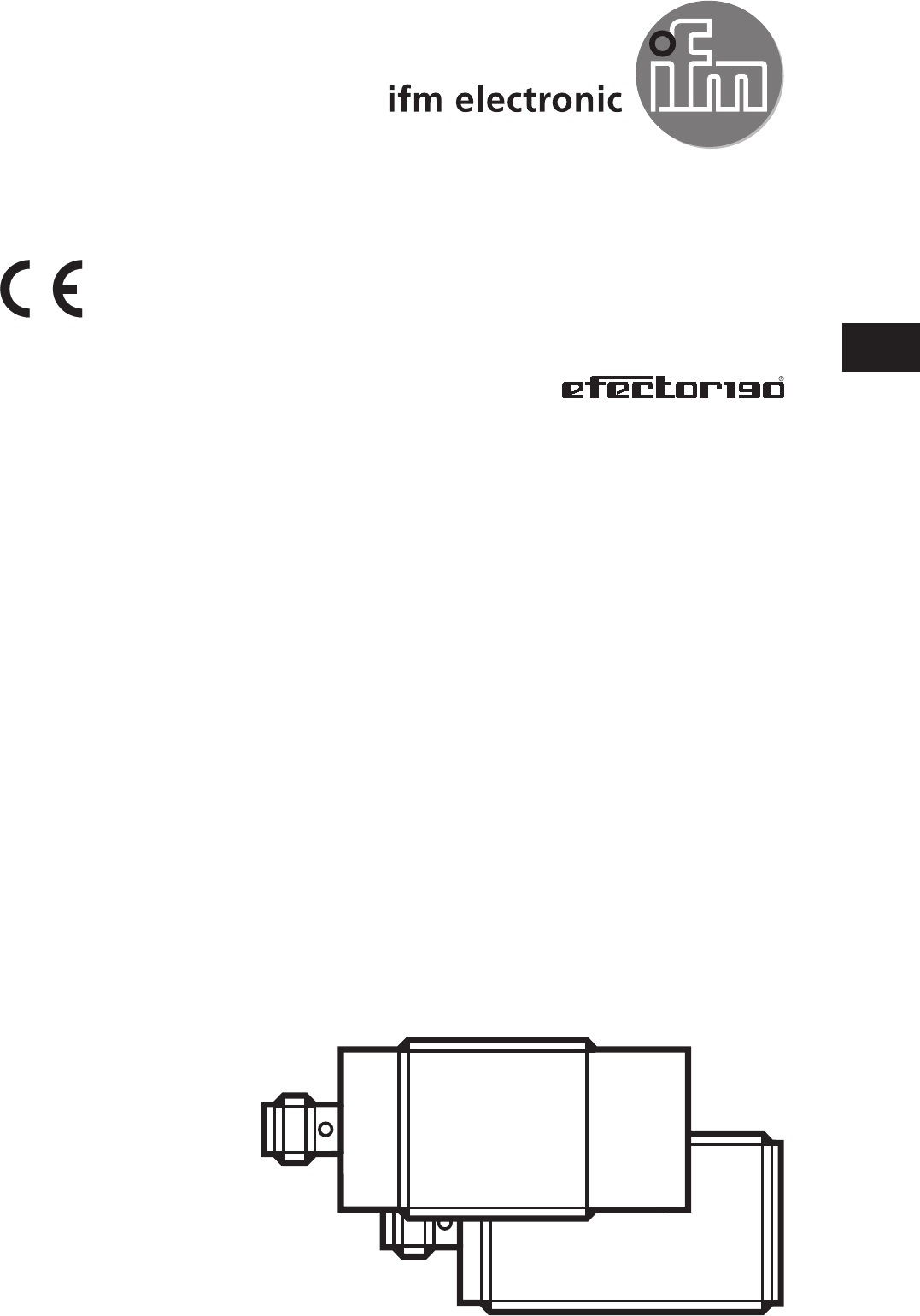
Installation Instructions
RF-identification system
Read/write head
DTM434
DTM435
DTM436
DTM437
80231613 / 00 09 / 2015
UK
2
Content
1 Preliminary note ���������������������������������������������������������������������������������������������������4
1�1 Symbols used �����������������������������������������������������������������������������������������������4
1�2 Warnings used ����������������������������������������������������������������������������������������������4
2 Safety instructions �����������������������������������������������������������������������������������������������4
2�1 General ��������������������������������������������������������������������������������������������������������� 4
2�2 Radio equipment ������������������������������������������������������������������������������������������5
2�3 Interference of electronic and medical devices ��������������������������������������������5
3 Functions and features ����������������������������������������������������������������������������������������5
4 Function ���������������������������������������������������������������������������������������������������������������5
4�1 Operating principle ���������������������������������������������������������������������������������������5
4�2 Overview �������������������������������������������������������������������������������������������������������6
5 Installation������������������������������������������������������������������������������������������������������������6
5�1 General installation instructions ��������������������������������������������������������������������6
5�2 Notes on ID tag mounting �����������������������������������������������������������������������������6
5�3 Avoiding interference ������������������������������������������������������������������������������������7
5�4 Mechanical design ���������������������������������������������������������������������������������������� 7
5�5 Fixing example ���������������������������������������������������������������������������������������������7
5�6 Mounting distances ���������������������������������������������������������������������������������������8
5�6�1 DTM434 / DTM436 �������������������������������������������������������������������������������8
5�6�2 DTM435 / DTM437 �������������������������������������������������������������������������������8
5�7 Positioning of the ID tags ������������������������������������������������������������������������������9
5�7�1 DTM434 / DTM436 �������������������������������������������������������������������������������9
5�7�2 DTM435 / DTM437 �������������������������������������������������������������������������������9
6 Electrical connection ������������������������������������������������������������������������������������������10
6�1 Wiring ���������������������������������������������������������������������������������������������������������10
6�2 CAN bus interface ��������������������������������������������������������������������������������������10
6�3 cULus ���������������������������������������������������������������������������������������������������������10
7 Indicators ����������������������������������������������������������������������������������������������������������� 11
7�1 DTM434 / DTM435 (CANopen) ������������������������������������������������������������������ 11
7�2 DTM436 / DTM437 (J1939) ������������������������������������������������������������������������ 12
8 Operation �����������������������������������������������������������������������������������������������������������13
8�1 CANopen devices (DTM434 / DTM435) �����������������������������������������������������13
8�2 J1939 devices (DTM436 / DTM437) �����������������������������������������������������������13

3
UK
9 Dimensions ��������������������������������������������������������������������������������������������������������13
10 Technical data �������������������������������������������������������������������������������������������������� 13
11 Maintenance, repair and disposal ��������������������������������������������������������������������14
12 Approvals/standards ����������������������������������������������������������������������������������������14
12�1 Radio approvals ����������������������������������������������������������������������������������������14
12�1�1 Overview �������������������������������������������������������������������������������������������14
12�1�2 Europe ����������������������������������������������������������������������������������������������14
12�1�3 USA ��������������������������������������������������������������������������������������������������14
12�1�4 Canada ���������������������������������������������������������������������������������������������15
12�1�5 Taiwan ����������������������������������������������������������������������������������������������15
12�1�6 Australia �������������������������������������������������������������������������������������������� 15
12�1�7 EC declaration of conformity ������������������������������������������������������������15
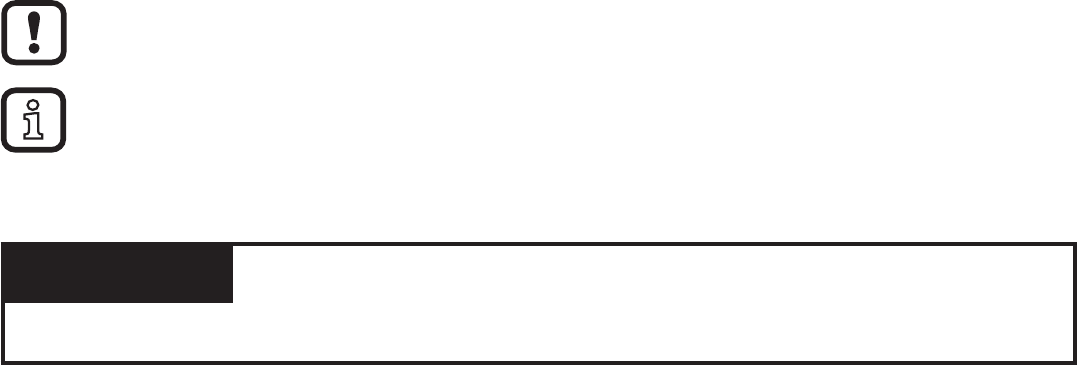
4
1 Preliminary note
This document is part of the device and contains information about the correct
handling of the product�
This document is intended for specialists� These specialists are people who are
qualified by their training and their experience to see risks and to avoid possible
hazards that may be caused during operation or maintenance of the device�
Read this document before use to familiarise yourself with operating conditions,
installation and operation� Keep this document during the entire duration of use of
the device�
1.1 Symbols used
►Instructions
→Cross-reference
Important note
Non-compliance may result in malfunction or interference�
Information
Supplementary note
1.2 Warnings used
ATTENTION
Warning of damage to property�
2 Safety instructions
2.1 General
Observe the operating instructions� Non-observance of the instructions, operation
which is not in accordance with use as prescribed below, wrong installation or
incorrect handling can affect the safety of operators and machinery�
The installation and connection must comply with the applicable national and
international standards� Responsibility lies with the person installing the device�
The device must only be installed, connected and put into operation by a qualified
electrician as the safe function of the device and machinery is only guaranteed
when installation is correctly carried out�
Disconnect the device externally before handling it�

5
UK
In case of malfunction of the device or uncertainties please contact the
manufacturer� Any tampering with the device can seriously affect the safety of
operators and machinery� This is not permitted and leads to an exclusion of liability
and warranty�
2.2 Radio equipment
In general, radio equipment must not be used in the vicinity of petrol stations, fuel
depots, chemical plants or blasting operations�
►Do not transport and store any flammable gases, liquids or explosive
substances near the unit�
2.3 Interference of electronic and medical devices
Operation of the unit can affect the function of electronic devices that are not
correctly shielded�
►Disconnect the device in the vicinity of medical equipment�
►Contact the manufacturer of the corresponding device in case of any
interference�
3 Functions and features
The device is suited for non-contact reading and writing of system-compliant
RFID tags (ID tags)�
Data transmission is done via the CAN bus�
4 Function
4.1 Operating principle
The ID tags are operated passively, i�e� without battery� The energy required for
operation is supplied by the read/write head�
The physical principle of the energy transfer is based on inductive coupling� The
integrated antenna coil in the read/write head generates a magnetic field which
partly penetrates the antenna coil of the ID tag� A voltage is generated by induction
that supplies the data carrier with energy�
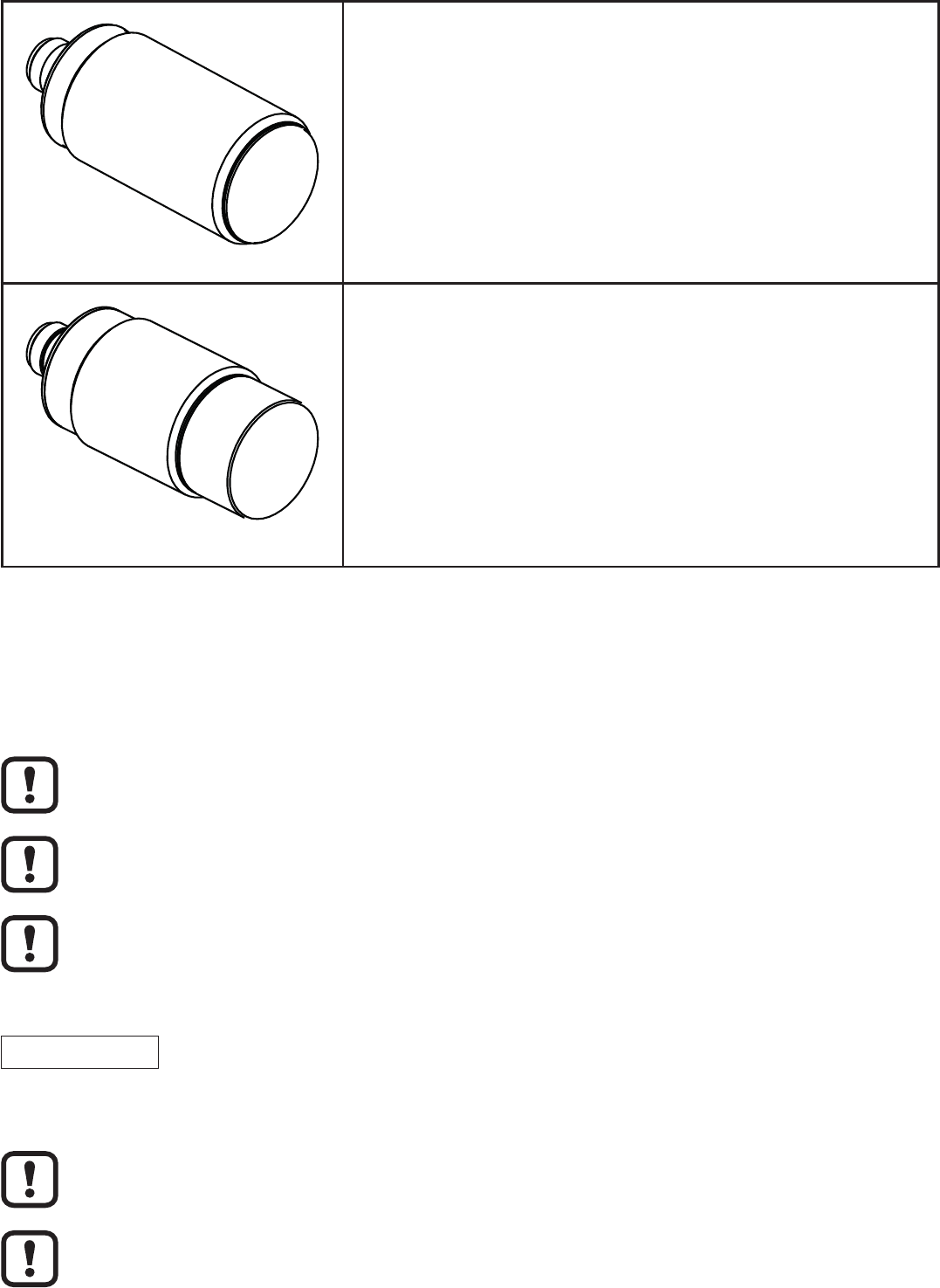
6
4.2 Overview
Art� no�:
Function:
Operating frequency:
RFID standard:
Type:
DTM434 / DTM436
read/write head
13�56 Mhz
ISO15693
M30, flush mountable
Art� no�:
Function:
Operating frequency:
RFID standard:
Type:
DTM435 / DTM437
read/write head
13�56 Mhz
ISO15693
M30, non flush mountable
5 Installation
5.1 General installation instructions
When mounting several read/write heads adhere to the minimum distances
between the systems�
Flush mounting of a read/write head in metal reduces the read/write
distance�
The immediate vicinity of powerful HF emission sources such as welding
transformers or converters can affect operation of the read/write heads�
Information on the available mounting accessories is available on our website at:
www�ifm�com → Data sheet search → e.g. DTM434 → Accessories
5.2 Notes on ID tag mounting
Installation of the ID tags in or on metal reduces the read and write
distances�
The orientation of the read/write head antenna axis must correspond with
the axis of the ID tag coil�
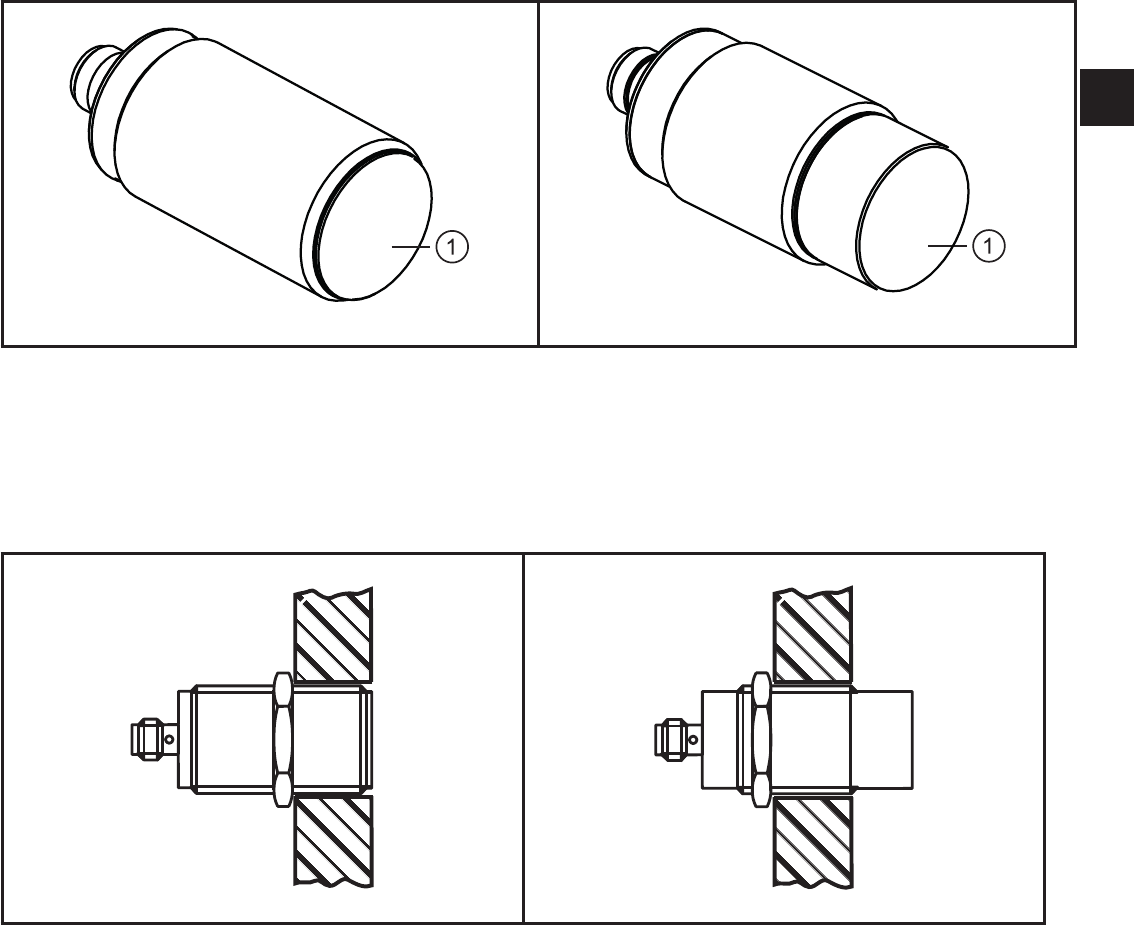
7
UK
5.3 Avoiding interference
The device generates a modulated electrical field with a frequency of 13�56 MHz�
To avoid interference of the data communication no other devices generating
interference emission in this frequency band must be operated in its vicinity� Such
devices are for example frequency converters and switched-mode power supplies�
5.4 Mechanical design
1: Sensing face (DTM434 / DTM436) 1: Sensing face (DTM435 / DTM437)
5.5 Fixing example
►Fix the device using the supplied nuts (M30)�
flush (DTM434 / DTM436) non flush (DTM434 / DTM436)
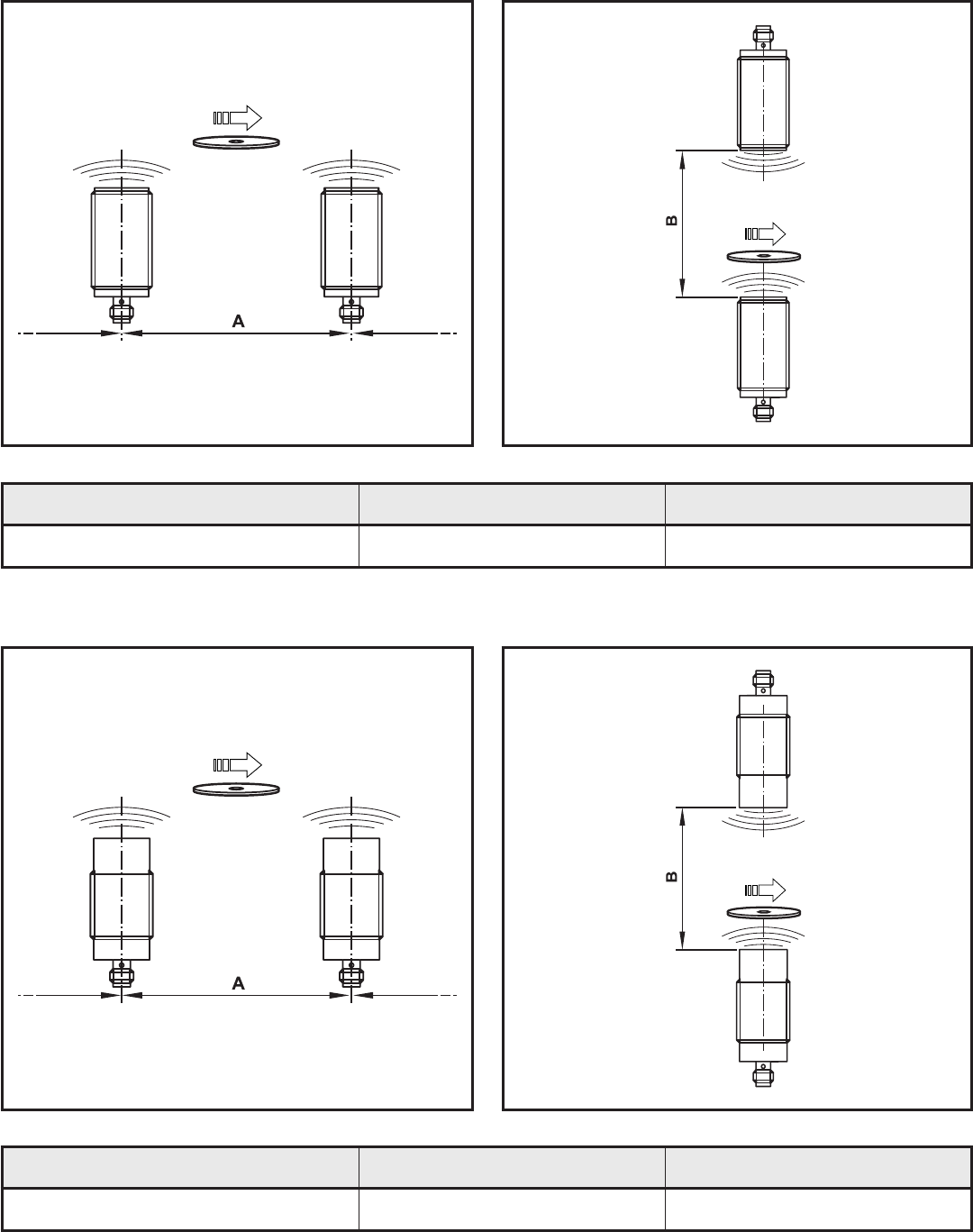
8
5.6 Mounting distances
5.6.1 DTM434 / DTM436
Operating mode Distance side (A) Distance front (B)
For reading and writing ≥ 60 mm ≥ 120 mm
5.6.2 DTM435 / DTM437
Operating mode Distance side (A) Distance front (B)
For reading and writing ≥ 100 mm ≥ 200 mm
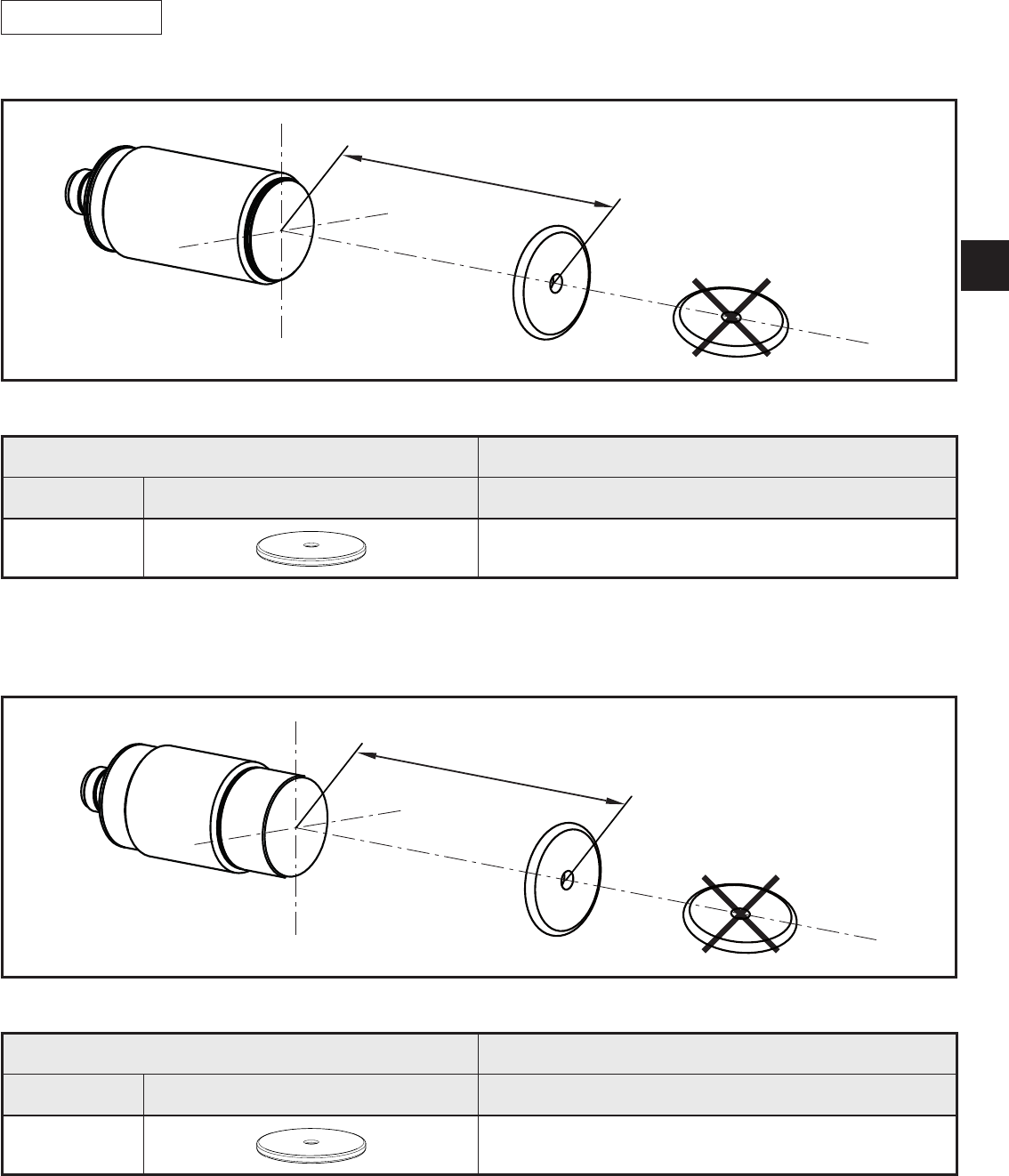
9
UK
5.7 Positioning of the ID tags
A selection of ID tags is available on our website at:
www�ifm�com → Product line → Identification systems → Tags
5.7.1 DTM434 / DTM436
D
►Align the ID tag on the antenna central axis�
Distance read/write head (D)
ID tag Type Plastics
E80371 30 mm
All indications apply to static read/write operations�
5.7.2 DTM435 / DTM437
D
►Align the ID tag on the antenna central axis�
Distance read/write head (D)
ID tag Type Plastics
E80371 55 mm
All indications apply to static read/write operations�
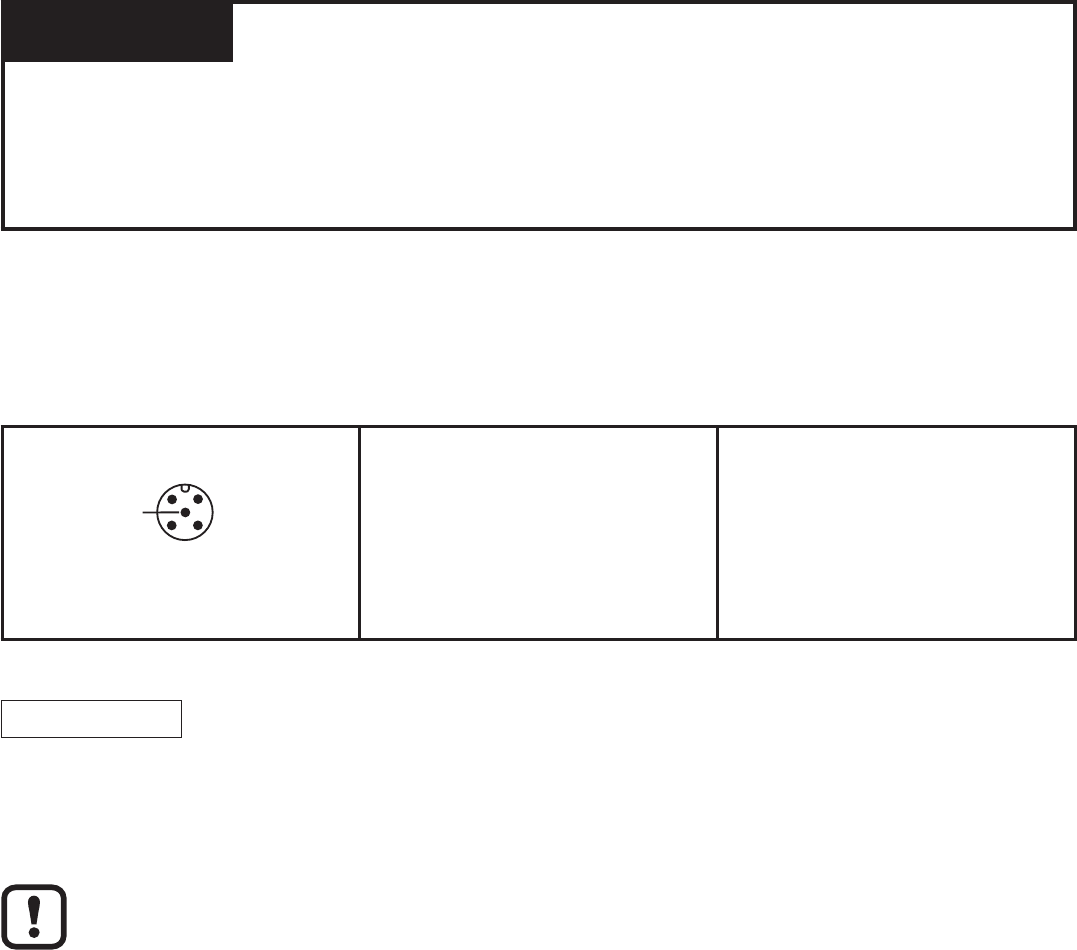
10
6 Electrical connection
ATTENTION
The unit must be connected by a qualified electrician�
Device of protection class III (PC III)
The electric supply must only be made via PELV/SELV circuits�
►Disconnect power before connecting the unit�
6.1 Wiring
The device has a 5-pole round M12 connector (A-coded)� The pin connection
corresponds to CiA DR-303-1�
4
2 1
3
5
M12 connector CAN
1: CAN shield
2: + UB
3: CAN _GND
4: CAN_H
5: CAN_L
Not connected
Supply voltage
GND
H bus cable
L bus cable
A selection of sockets is available on our website at:
www�ifm�com → Data sheet search → e.g. DTM434 → Accessories
6.2 CAN bus interface
The device has a CAN interface�
Use cables that are approved for CAN bus� Terminate the cables using
terminating resistors (120 Ω). Use ifm's EVC492 cable with integrated
terminating resistor as an alternative�
6.3 cULus
For units with cULus approval and the scope of validity cULus:
►Supply the device from an isolating transformer having a secondary UL-listed
fuse rated
a) 5 A at voltages of 0���20 V rms (0���28�3 V p )
b) 100/V p at voltages of 20���30 V rms (28�3���42�4 V p )
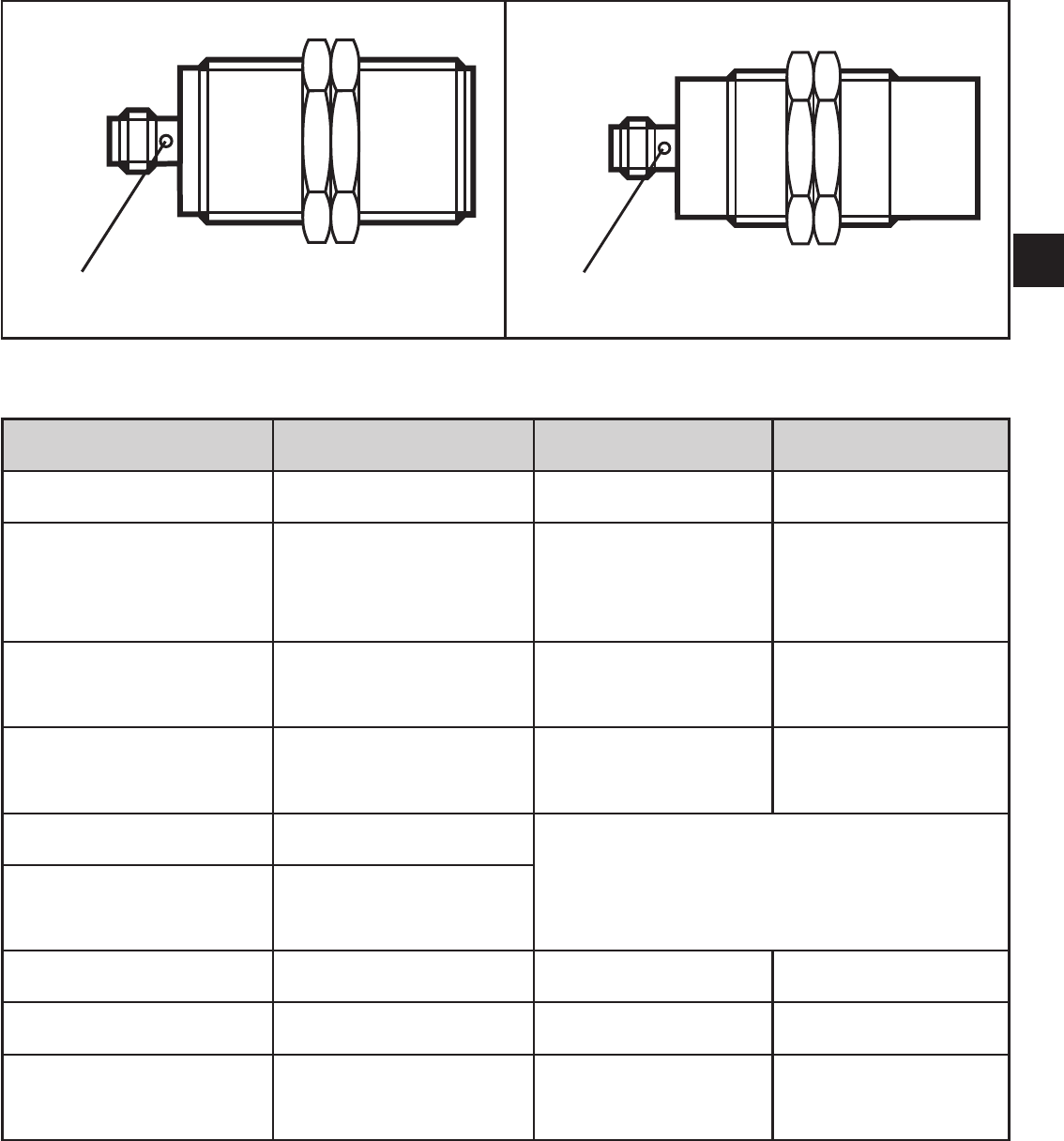
11
UK
7 Indicators
7.1 DTM434 / DTM435 (CANopen)
LED LED
DTM434 (flush) DTM435 (non flush)
Operating status LED red LED green LED yellow
Preoperational Off Lights permanently Off
Preoperational and
tag detected
Off Flashes alternately
with yellow LED
(every 1�6 s)
Flashes alternately
with green LED
(every 1�6 s)
Operational Off Flashes (every
0�4 s)
Off
Operational and tag
detected
Off Off Lights perma-
nently
Configuration error Flashes (every 0�4 s) LED reacts according to the current
operating status
Error in the CAN
network
Flashes (every 1�2 s)
CAN: bus OFF Lights permanently Off Off
LSS service active Flashing Off Off
Hardware error
detected in the device
Off Off Flashing
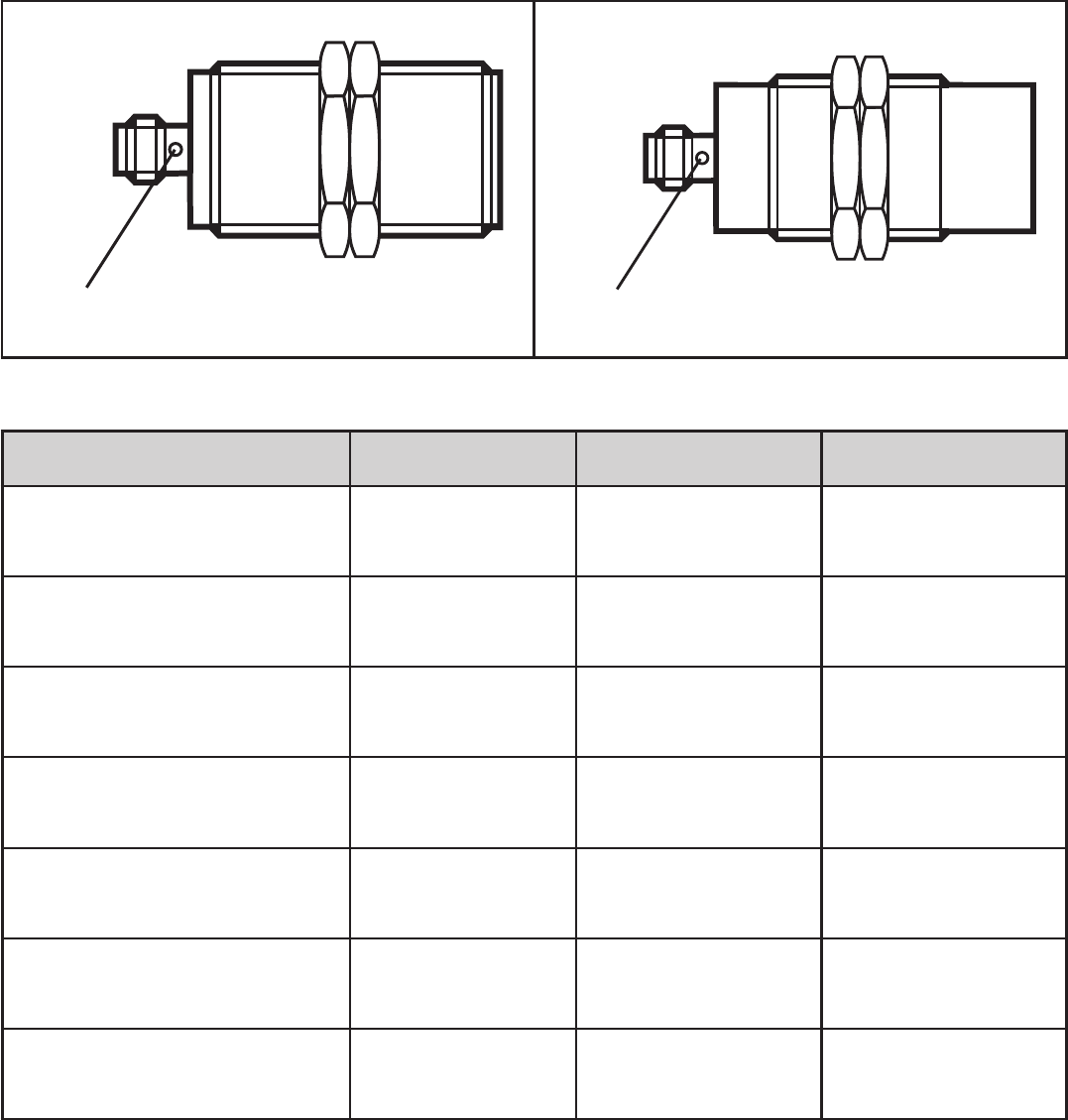
12
7.2 DTM436 / DTM437 (J1939)
LED LED
DTM436 (flush) DTM437 (non flush)
Operating status LED red LED green LED yellow
Operational Off Lights
permanently
Off
Deactivated Off Flashes
(every second)
Off
Tag detected Off Off Lights
permanently
Tag data successfully
read / written
Off Off Flashes once for
1/4 s
Error while
reading / writing tag data
Off Off Flashes briefly 4x
Error while communicating
via CAN
Lights
permanently
Off Off
Hardware error Flashes
(every second)
Off Off
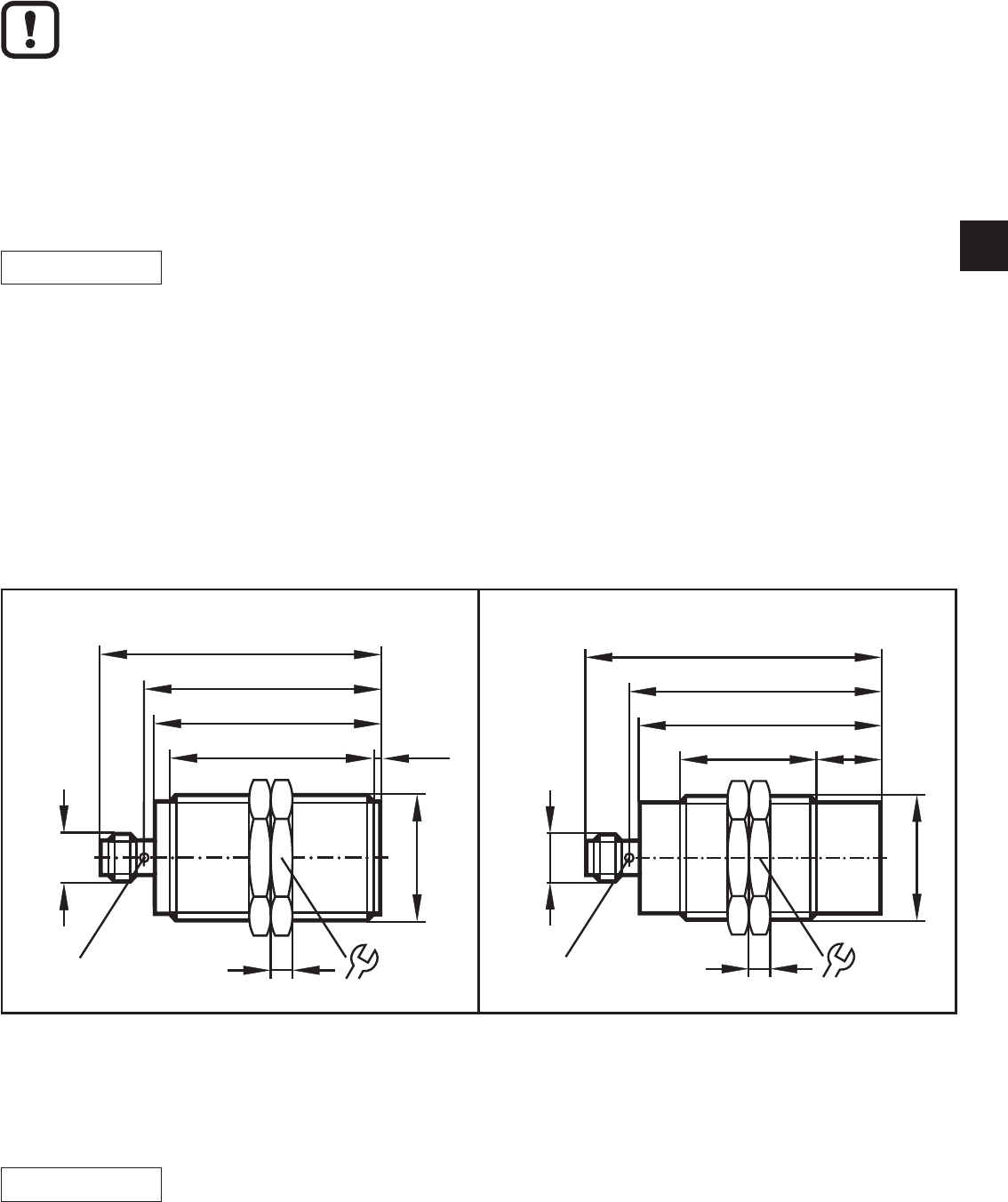
13
UK
8 Operation
The device is operated in a CANopen network�
The CAN network must be correctly configured so that the device functions
reliably�
Depending on the configuration of the CAN network the settings under
(→ 8.1) and (→ 8.2) have to be adapted�
More notes on operation can be found in the operating instructions:
www�ifm�com → Data sheet search → DTM434 → Operating instructions
8.1 CANopen devices (DTM434 / DTM435)
The device is delivered with the node ID 32 and a bit rate of 125 Kbits/s�
8.2 J1939 devices (DTM436 / DTM437)
The device is delivered with the address 235 and a bit rate of 250 Kbits/s�
9 Dimensions
59
49
M30x1,5
57
70
M12 x1
LED
1,5
536
59
32
M30x1,5
57
70
15
M12 x1
LED 536
DTM434 / DTM436 DTM435 / DTM437
10 Technical data
The data sheets are available on our website at:
www�ifm�com → Data sheet search → DTM434

14
11 Maintenance, repair and disposal
►Do not open the housing as the device does not contain any components
which can be maintained by the user� The device must only be repaired by the
manufacturer�
►Dispose of the device in accordance with the national environmental
regulations�
12 Approvals/standards
12.1 Radio approvals
12.1.1 Overview
The overview of the approval status of a unit is available on our website at:
www�ifm�com → Data sheet search → e.g. DTM434 → More information
12.1.2 Europe
Use in all EU countries
12.1.3 USA
FCC note:
This device complies with Part 15 of the FCC Rules� Operation is subject to the
following two conditions:
1� This device must not cause harmful interference, and
2� this device must accept any interference received, including interference that
may cause undesired operation�
Changes or modifications made to this equipment not expressly approved by ifm
may void the FCC authorization to operate this equipment�
NOTE: This equipment has been tested and found to comply with the limits for
a Class A digital device, pursuant to part 15 of the FCC Rules� These limits are
designed to provide reasonable protection against harmful interference when the
equipment is operated in a commercial environment� This equipment generates,
uses and can radiate radio frequency energy and, if not installed and used
in accordance with the instructions, may cause harmful interference to radio
communications� Operation of this equipment in a residential area is likely to
cause harmful interference in which case the user will be required to correct the
interference at his own expense�

15
UK
12.1.4 Canada
IC note:
This device complies with Industry Canada license-exempt RSS standards�
Operation is subject to the following two conditions:
1� The device may not cause interference, and
2� the user of the device must accept any interference received, including
interference that may cause undesired operation�
12.1.5 Taiwan
Administrative Regulations on Low Power Radio Wave Devices warning
Article 12
Unless granted permission by NCC, no company, firm, or user shall alter
the frequency, increase the transmitting power, or alter the original design
characteristics or operating functions of an approved low-power radio-frequency
device�
Article 14
Low-power radio-frequency devices shall not affect aircraft security nor interfere
with legal communications� If such interference occurs, the user shall immediately
cease operating the device until improvement is made and the interference no
longer exists�
Legal communications refers to the wireless telecommunication operations that
comply with the Telecommunications Act� Low-power radio-frequency devices
must accept any interference received from legal communications and ISM radio
wave devices�
12.1.6 Australia
Use in Australia:
12.1.7 EC declaration of conformity
You can find the EC declaration of conformity on our website at:
www�ifm�com → Data sheet search → DTM434 → More information